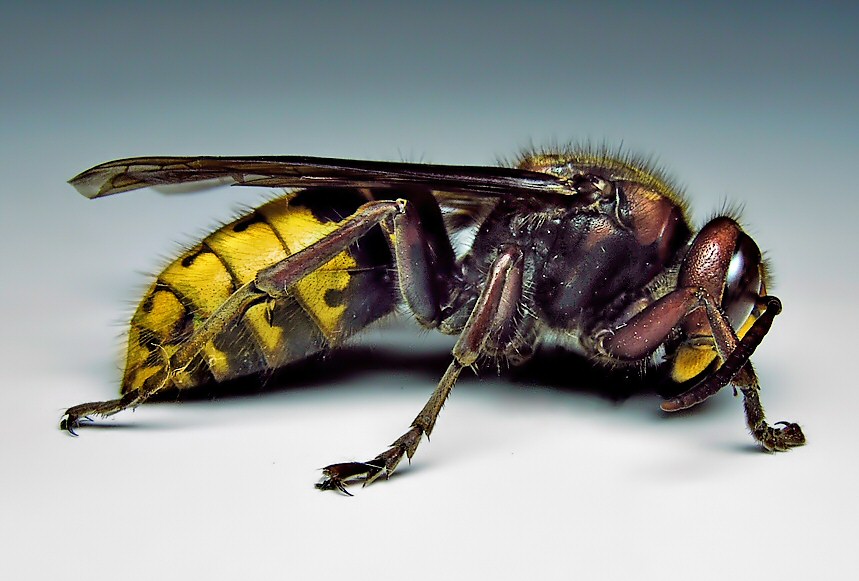We’re talking stingers again! Despite being maligned and feared by many, hornets are far less hostile than so-called ‘social’ wasps – at least towards us humans. Some hornet lovers label our native European species ‘gentle giants’. But we also have Asian hornets in the PO. How do they differ and what’s the problem with them? Lesley McLaren explains.
Both have the same lifecycle: Around last November new queens left their nest, mated, and hibernated for the winter. The rest of the colony died, and that nest won’t be reused. This spring, surviving queens have emerged to start new nests. Each will grow as its population increases.
European hornets (Frelons européens)

- Length 25-35mm
- Head/face – brown/yellow
- Body mostly yellow, some black markings – very wasp-like
- Legs dark
- Also fly at night
- Nest usually in dark places, eg. tree hollows, walls, roof spaces
- Colony population 400-700 by autumn

Although fruit is a favourite food in the autumn, earlier in the year, while larvae are being fed, 90% of their diet is comprised of flies. A large colony can capture several kilos of annoying or harmful insects in a season. What’s not to love about that?
They do kill some bees, but can also be beneficial to bee colonies, preying on damaging wax moths. In Germany, European hornets are a protected species – perhaps France should follow suit?
Asian hornets (Frelons asiatiques)

- Length 20-30mm (smaller)
- Head/face – brown/orange
- Body mostly dark, velvety, with orange segments towards the end
- Legs yellow towards the bottom
- Never fly at night
- Nest usually in open, eg. tree tops, hedges. Huge – up to 90cm high!
- Colony population 1,000 – 2,000 by autumn (one source states 5,000 but this is unverified)

It’s thought they came to France in 2004, in a consignment of pottery from China. One nest can produce up to 350 queens in a season! Not all make it through the winter, but plenty survive to start fresh colonies. They spread at a rate of about 100km a year and, in 2016, several nests were spotted in and around just one Albères village. A new generation my be buzzily setting up home in a tree near you right now, but this early in the year that papier mâché sphere will be hard to spot.
Considered even less aggressive to humans than the Europeans, their sting is said to be no worse than a wasp’s. But all hornets can sting multiple times – and will protect their nest en masse! If you react badly to a sting, seek medical advice.
The problem is their potentially devastating impact on the bee population. Several will work together, hovering in front of hives to pick off bees. Whole colonies can be wiped out. That’s bad for bees but also for us because we – and other creatures – depend on their pollination for many foods. No bees, no PO cherries!
Although it’s now impossible to eradicate Asian hornets from France, we should still try to limit their numbers. Current methods may be ineffective (traps), illegal (pesticides), or positively dangerous (shooting nests down!). But there is a glimmer of hope: Pollinis (a nonprofit organisation) is developing a “safe, clean” alternative. A microwave weapon!
If you find an Asian hornet nest…..
DO NOT try to destroy it yourself. Report it to the local Mairie, which should be able to advise – or take action if the nest is on public land. There is no point destroying a nest in winter – it’s empty and won’t be used again.
Advice from vespa-crabro.com
Although hornets rarely make unprovoked attacks, if close to them
DO NOT:
- Move quickly
- Block flight path
- Breath on or shake their nest!

I just got stung! Do these look like European Hornets? https://photos.app.goo.gl/cGR5fKYD8tM8A8CF8